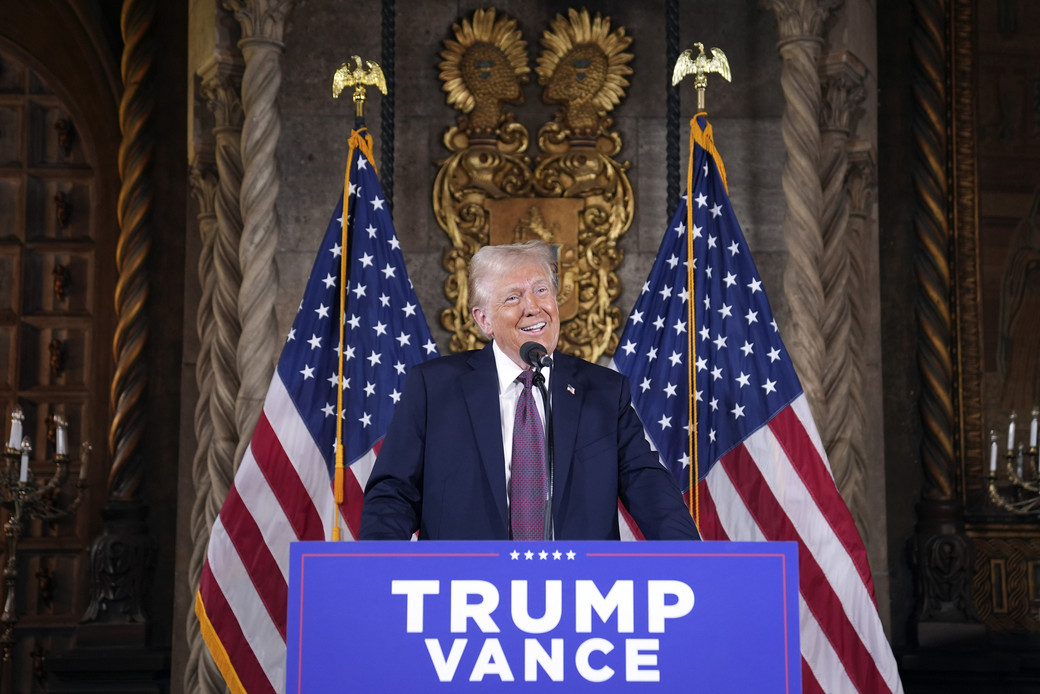How will the US dollar move amid Trump tariff confusion?
Mr. Donald Trump later shot down the idea that tariffs will be more measured than those he suggested before the election. Will this impact the US dollar?

The new year is only a few days oold,and already it is clear what the key topic will be for financial asset prices: tariffs. It is also clear from elect President Trump’s denial of earlier speculation of a watering down of tariffs yesterday that the path to new trade actions will likely be a very bumpy one for asset prices. The US dollar could prove particularly volatile, and, in spite of all the uncertainty around the tariff issue, many analysts think that traders and investors should stick with a bullish US dollar view for now.
Yesterday’s speculation centred around the possibility that the new administration will not target broad imports but, instead, just imports of so-called ‘critical’ goods. This would make a big difference if correct, but Trump later shot down the idea that tariffs will be more measured than those he suggested before the election. Trump’s pre-election promise seemed to be that the US would levy tariffs at a rate of 10 or 20% on all imports, with a ‘special’ rate of 60% on Chinese imports.
We have long questioned whether Trump has the authority to impose tariffs on all imports. For while the president has the ability to unilaterally declare tariffs if there is a threat to national security or if a country/industry is deemed to be acting unfairly towards the US, it seems hard to believe that the whole world is a national security threat to the US or is treating the US unfairly. Of course, we don’t doubt that Trump could claim that this is the case, or that the US is in a ‘national emergency’ which would give him a route to imposing a universal tariff.
Steven Barrow, Head of Standard Bank G10 Strategy, said the key issue here is whether Trump could steamroller global tariffs through under cover of one or more of these routes. None would seem to make any logical sense, but whether that dissuades Trump is another matter. And just whether the new Congress would stand up to Trump if he were to decide to seek politicians’ approval is also questionable. While we don’t deny that Trump could go for a hugely consequential global tariff of between 10% and 20% on all imports, we still think that the odds are below 50%.
What’s more, just judging from yesterday’s reaction in the US dollar, it would seem that the market may be taking a similar view given that the rumour of watered-down tariffs hit the US dollar hard, while its rebound following Trump’s denial was far more modest. In short, the view seems to be that there’s no smoke without fire.
Will the US dollar continue to slide If – and it is a big ‘if’ – global tariffs are not as punitive as Trump suggests, with just critical goods covered by a new tax? While we think that watered-down tariffs are more likely than not, Steven Barrow is sceptical that this will mean a lower US dollar for a number of reasons.
One is that, while many analysts feel that a global tariff on all imports is unlikely, specific measures against certain industries and certain countries, notably China, will still justify a stronger US dollar. The only difference is that US dollar strength is more likely to be squeezed into those currencies that find themselves on the wrong end of tariffs. This is most likely to mean the renminbi, but could include others as well, like the Mexican peso. Is it possible that the US dollar could rise against tariffed-countries’ currencies but fall elsewhere?
Steven Barrow thinks it unlikely. Back in Trump’s first term, the punitive trade actions were predominantly aimed at China, and the renminbi duly fell once the tariffs started in 2018. But this was just part of a broader dollar rise against other currencies where far less onerous tariffs were imposed, or often, no tariffs at all. In short, if tariffs put upward pressure on the US dollar again in tariffed countries' currencies, it is likely to lift the US dollar across the board.
“With all this in mind, we would be reticent to adopt the view that the overall tariff threat from the incoming Trump administration is not as onerous for other currencies as we might have suspected. We also have to bear in mind that the prospect of a stronger dollar under a second Trump term is not just down to whether, or in what fashion, tariffs are introduced”, said Steven Barrow.








